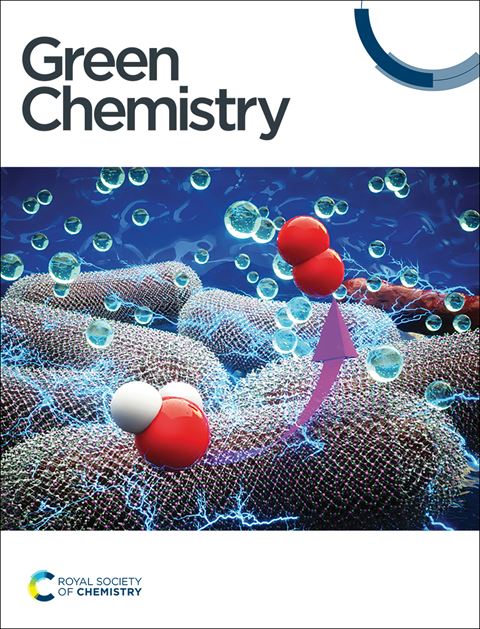Iridium-catalyzed N-methylation of drug molecules†
IF 9.3
1区 化学
Q1 CHEMISTRY, MULTIDISCIPLINARY
引用次数: 0
Abstract
N-Methyl amines play extremely important roles in numerous fields encompassing life science, drug discovery, and organic synthesis. Although numerous methylation strategies have been established, the methylation of densely functionalized drug molecules still remains a formidable challenge in terms of functionality tolerance and chemoselectivity control. Herein, we overcome the challenge by adopting a catalytically improved Eschweiler–Clarke methylation strategy. An array of drug molecules, as well as other amine molecules, can be late-stage edited in a highly selective manner via our iridium-catalyzed N-methylation protocol, exhibiting exceedingly high functionality compatibility and very high catalyst efficiency (S/C ratio as high as 50 000 and turnover frequency as high as 53 000 h−1). This protocol is easy to scale up, as demonstrated by two decagram-scale reactions, and is orthogonal to previous methylation methods when different reactive sites are present in substrates. Mono- and dideuteromethylated drug molecules with exceedingly high deuterium incorporation ([D] = 97.4–99.9%) are also accessible by means of this protocol.
铱催化药物分子的n -甲基化
n -甲基胺在包括生命科学、药物发现和有机合成在内的许多领域发挥着极其重要的作用。虽然已经建立了许多甲基化策略,但在功能耐受性和化学选择性控制方面,密集功能化药物分子的甲基化仍然是一个巨大的挑战。在此,我们通过采用催化改进的Eschweiler-Clarke甲基化策略克服了这一挑战。通过我们的铱催化n -甲基化方案,一系列药物分子以及其他胺分子可以以高度选择性的方式进行后期编辑,表现出极高的功能相容性和非常高的催化剂效率(S/C比高达50,000,周转频率高达53,000 h−1)。正如两个十克级反应所证明的那样,该方案易于扩大规模,并且当底物中存在不同的反应位点时,与先前的甲基化方法正交。具有极高氘掺入率([D] = 97.4-99.9%)的单氘甲基化和双氘甲基化药物分子也可通过该方法获得。
本文章由计算机程序翻译,如有差异,请以英文原文为准。
求助全文
约1分钟内获得全文
求助全文
来源期刊

Green Chemistry
化学-化学综合
CiteScore
16.10
自引率
7.10%
发文量
677
审稿时长
1.4 months
期刊介绍:
Green Chemistry is a journal that provides a unique forum for the publication of innovative research on the development of alternative green and sustainable technologies. The scope of Green Chemistry is based on the definition proposed by Anastas and Warner (Green Chemistry: Theory and Practice, P T Anastas and J C Warner, Oxford University Press, Oxford, 1998), which defines green chemistry as the utilisation of a set of principles that reduces or eliminates the use or generation of hazardous substances in the design, manufacture and application of chemical products. Green Chemistry aims to reduce the environmental impact of the chemical enterprise by developing a technology base that is inherently non-toxic to living things and the environment. The journal welcomes submissions on all aspects of research relating to this endeavor and publishes original and significant cutting-edge research that is likely to be of wide general appeal. For a work to be published, it must present a significant advance in green chemistry, including a comparison with existing methods and a demonstration of advantages over those methods.
 求助内容:
求助内容: 应助结果提醒方式:
应助结果提醒方式:


